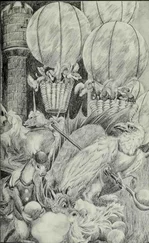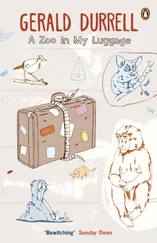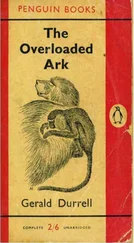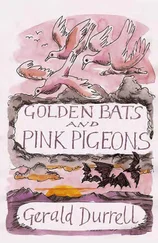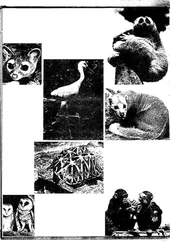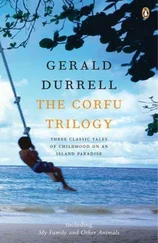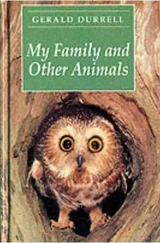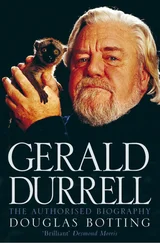Gerald Durrell - The Bafut Beagles
Здесь есть возможность читать онлайн «Gerald Durrell - The Bafut Beagles» весь текст электронной книги совершенно бесплатно (целиком полную версию без сокращений). В некоторых случаях можно слушать аудио, скачать через торрент в формате fb2 и присутствует краткое содержание. Жанр: Современная проза, на английском языке. Описание произведения, (предисловие) а так же отзывы посетителей доступны на портале библиотеки ЛибКат.
- Название:The Bafut Beagles
- Автор:
- Жанр:
- Год:неизвестен
- ISBN:нет данных
- Рейтинг книги:5 / 5. Голосов: 1
-
Избранное:Добавить в избранное
- Отзывы:
-
Ваша оценка:
- 100
- 1
- 2
- 3
- 4
- 5
The Bafut Beagles: краткое содержание, описание и аннотация
Предлагаем к чтению аннотацию, описание, краткое содержание или предисловие (зависит от того, что написал сам автор книги «The Bafut Beagles»). Если вы не нашли необходимую информацию о книге — напишите в комментариях, мы постараемся отыскать её.
The Bafut Beagles — читать онлайн бесплатно полную книгу (весь текст) целиком
Ниже представлен текст книги, разбитый по страницам. Система сохранения места последней прочитанной страницы, позволяет с удобством читать онлайн бесплатно книгу «The Bafut Beagles», без необходимости каждый раз заново искать на чём Вы остановились. Поставьте закладку, и сможете в любой момент перейти на страницу, на которой закончили чтение.
Интервал:
Закладка:
CHAPTER SEVEN
The Que-Fong-Goo
The grassland country was populated by a rich variety of reptile life, and most of it seemed easily caught. In the lowland forests you very rarely saw a snake of any description, even if you searched for them. There were snakes there, of course, but I think that they were more widely dispersed, and probably most of the species were tree-dwellers, which made them much more difficult to see and to capture. In the mountains, however, the grass was alive with small rodents and frogs, and the patches of mountain forest rilled with birds, so it was a paradise for snakes. There were great black spitting cobras, green mambas, slim tree-snakes with enormous, innocent-looking eyes, the multi-coloured Gaboon viper, with a forked rhino-like horn on its nose, and a host of others. As well as snakes, there were plenty of frogs and toads; the frogs ranged in size from the Hairy Frog down to tiny tree-frogs the size of an acorn, some spotted and streaked with such a dazzling array of colours that they looked more like delicious sweets than amphibians. The toads, on the whole, were fairly drab, but they made up for this by being decorated with strange clusters of warts and protuberances on their bodies, and an astonishing variety of colouring in their eyes.
But the commonest of the reptiles were the lizards, which could be found everywhere; in the long herbage at the roadside scuttled fat skinks with stubby legs, fawn and silver and black in colour, and on the walls of the huts, in the road, and on the rocks the rainbow-coloured agamas pranced and nodded. Under the bark of trees or beneath stones you could find small geckos with great golden eyes, their bodies neatly and handsomely marked in chocolate and cream, and in the houses at night the ordinary house geckos, translucent and ghostly as pink pearls, paraded across the ceiling.
All these reptiles were brought in to me at one time or another by the local population. Sometimes it would be a snake tied insecurely to the end of a suck, or a calabash full of gulping frogs. Sometimes the capture would be carefully wrapped in the hunter's hat or shirt, or dangling on the end of a fine string. By these haphazard and dangerous methods such things as cobras, mambas, and Gaboon vipers would be brought to me, and although their captors knew their deadliness they handled them with an offhand carelessness that amazed me. As a rule, the African is no fool over snakes and prefers to regard every species as poisonous, just to be on the safe side, so to find the Bafutians treating them with such casualness was surprising, to say the least. I found it even more surprising when I discovered that the one reptile they all feared intensely was completely harmless.
I was out with the Bafut Beagles one day, and during the course of the hunt we came to a wide grassy valley about half a mile from the village. The Beagles had wandered off to set the nets, and while waiting for them I sat down in the grass to enjoy a cigarette. Suddenly my attention was attracted by a slight movement to my left, and on looking down I saw a reptile whose appearance made me gasp; hitherto I had been under the impression that the most colourful lizard in the grasslands was the agama, but, in comparison with the one that had crawled into view among the grass stems, the agama was as dull and colourless as a lump of putty. I sat there hardly daring to move, in case this wonderful creature dashed off into the herbage; as I remained quite still, it eventually decided that I was harmless, so slowly and luxuriously it slithered out into the sun and lay there contemplating me with its golden-flecked eyes. I could see that it was a skink of sorts, but one of the largest and most colourful skinks I had ever seen. It lay there quite still, basking in the early morning sun, so I had plenty of time to examine it.
Including its tail, it was about a foot in length and some two inches across the widest part of its body. It had a short, broad head and small but powerful legs. Its colouring and pattern were so dazzling and so intricate that it is almost impossible to describe. To begin with, the scales were large and very slightly raised, so that the whole creature looked as though it had been cleverly constructed out of mosaic. The throat was banded lengthwise with black and white, the top of the head was reddish-rust colour, while the cheeks, upper lip, and chin were bright brick red. The main body colour was a deep glossy black, against which the other colours showed up extremely well. Running from the angle of the jaw to the front legs were stripes of bright cherry red separated from each other by narrower bands composed of black-and-white scales. The tail and the outsides of the legs were spotted with white, the spots being fine and small on the legs, but so thickly distributed on the tail that in places they formed vertical bands. Its back was striped lengthwise in alternate stripes of black and canary yellow. As if that was not enough, the yellow stripes were broken in places by a series of pinkish scales. The whole reptile was bright and glossy, looking as though it had just been varnished and was still sticky.
As the skink and I sat there and watched each other I was busy trying to work out a plan for its capture. The butterfly net was some twenty feet away, but it might just as well have been in England for all the use it was, for I knew the skink would not lie there and allow me to trot over and fetch it. Behind him stretched a limitless jungle of long grass, and once he ran into that I knew he would disappear for good. Just then, to my dismay, I heard the Beagles returning. I knew I should have to do something quickly, as their approach would frighten the reptile. Slowly I rose to my feet, and the skink raised his head in alarm; as the first of the Beagles trotted through the grass, I flung myself desperately towards the skink. I had him at a slight disadvantage, for, having contemplated me in a motionless condition for a quarter of an hour, he had not expected me to launch myself through the air like a hawk. But my advantage was only temporary, for he recovered from his surprise quickly enough, and as I landed in the grass with a thump he scuttled to one side with great agility. I rolled over and made a wild grab at his rapidly retreating form, and as I did so the Beagle entered the clearing and saw what I was doing. Instead of leaping to my rescue, as I had expected, he uttered a prolonged shriek, jumped forward, and proceeded to drag me away from my quarry. The skink scuttled off into the dense tangle of grass and was lost; I shook off the Beagle's clutch on my arm and turned on him savagely.
'Bushman!' I snarled angrily. 'Na what foolish ting you do?'
'Masa,' said the Beagle, clicking his fingers in agitation, 'na bad, bad beef, dat ting. If 'e go bite Masa, Masa go die one time.'
With an effort I controlled my irritation. I had long ago found that, in spite of all arguments, the Africans clung tenaciously to their belief that some harmless species of reptile were deadly poisonous. So I resisted the temptation of telling the Beagle that he was an unmitigated idiot, and tried another line of argument instead.
'How you de call dis beef?' I asked.
'We call um Que-fong-goo, sah.'
'You say he get poison too much, eh?'
'Time no dere, Masa. Na bad beef.'
'All right, stupid man, you done forget that European get special medicine for dis kind of beef, eh? You done forget if dis beef go bite me I no go die, eh?'
' Eh! Masa, I done forget dis ting.'
'So you go run like woman, you de hollar and you de hold me so I go lose dis fine beef because you forget, eh?'
'Sorry, sah,' said the Beagle contritely.
I tapped his woolly skull with my finger.
'Next time, my friend,' I said sternly, 'you go tink with your brain before you go do dis kind of ting, you hear?'
Читать дальшеИнтервал:
Закладка:
Похожие книги на «The Bafut Beagles»
Представляем Вашему вниманию похожие книги на «The Bafut Beagles» списком для выбора. Мы отобрали схожую по названию и смыслу литературу в надежде предоставить читателям больше вариантов отыскать новые, интересные, ещё непрочитанные произведения.
Обсуждение, отзывы о книге «The Bafut Beagles» и просто собственные мнения читателей. Оставьте ваши комментарии, напишите, что Вы думаете о произведении, его смысле или главных героях. Укажите что конкретно понравилось, а что нет, и почему Вы так считаете.

